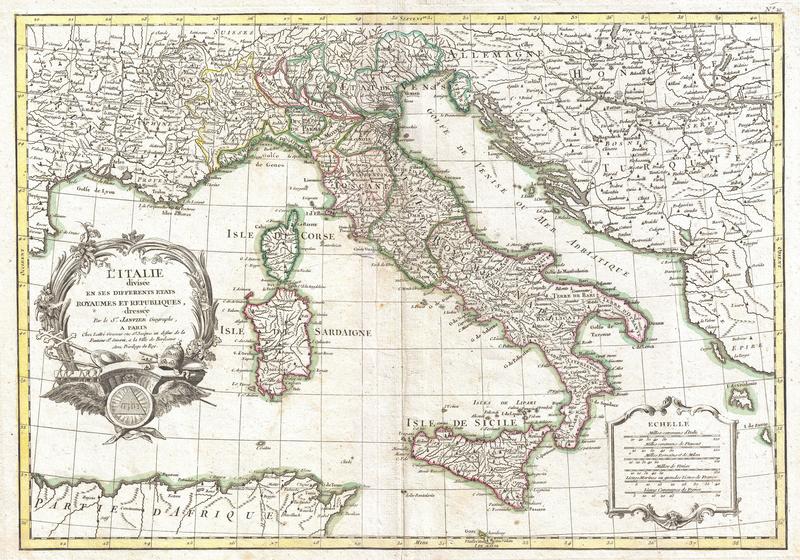Onward to Italy!

Jean Janvier, Jean Lattre, L'Italie divisee en ses differents etats Royaumes et Republiques, 1770, Engraving (Private Collection)
The tourists of the eighteenth century only had two options for transportation: by boat or by carriage and occasionally on foot through more rough terrains. If traveling by land and coming from the west, they could cut through France and then through the Alps which was the most direct route, and therefore the most common, since many tourists also liked to make a stop in Paris. Alternatively, if coming from the northwestern Europe, tourists could go through Germany and then Austria into Italy. One could also travel through eastern Switzerland or directly through Austria if coming from the east. If tourists decided to come by sea, which was less common, travelers took warships instead of merchant ships, as the accommodations were more comfortable.1 However, warships didn’t travel to Italian ports like merchant ships would for trade since the British military did not have political business there. After landing in southern France, tourists would have to arrange for a smaller boat to take them to Italy.
One specific route did not exist mainly because the tour did not follow a pre-established order. However, there were guidebooks already available to travelers by the beginning of the eighteenth century. “During the first half of the century, travellers were most familiar with [Joseph] Addison's Remarks on the Several Parts of Italy judging from references to it [in tourist manuscripts].”2 Many different types of guidebooks were available but Addison’s encouraged tourists to appreciate Italy’s land as much as its antiquities. With the widespread availablity of advice from guidebooks, each tour was constructed according to a tourist’s budget and interests. Risks were involved no matter which route a tourist chose. Storms, seasickness, and shipwreck were always a possibility with sea travel. On land, snow could block carriages in the Alps’ mountain passes, forcing tourists to walk.3 Still, in comparison to travel by sea, traveling by land was less dangerous as the quality of roads improved.
____________________________________________________________
1. Jeremy Black, Italy and the Grand Tour. (New Haven: Yale University Press, 2003),
23.
2. Paul F. Kirby, The Grand Tour in Italy, 1700-1800 (New York: S. F. Vanni, 1952), 6.
3. Black, Italy and the Grand Tour, 27.